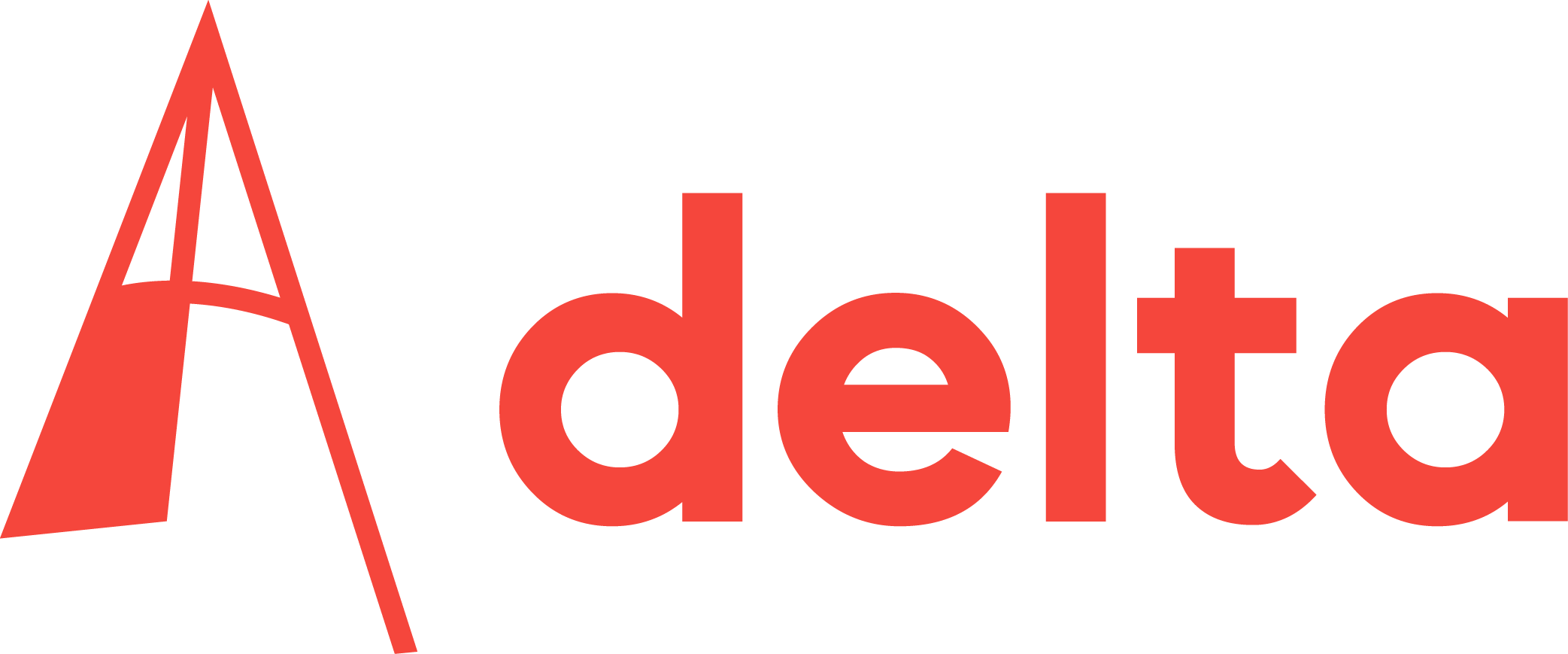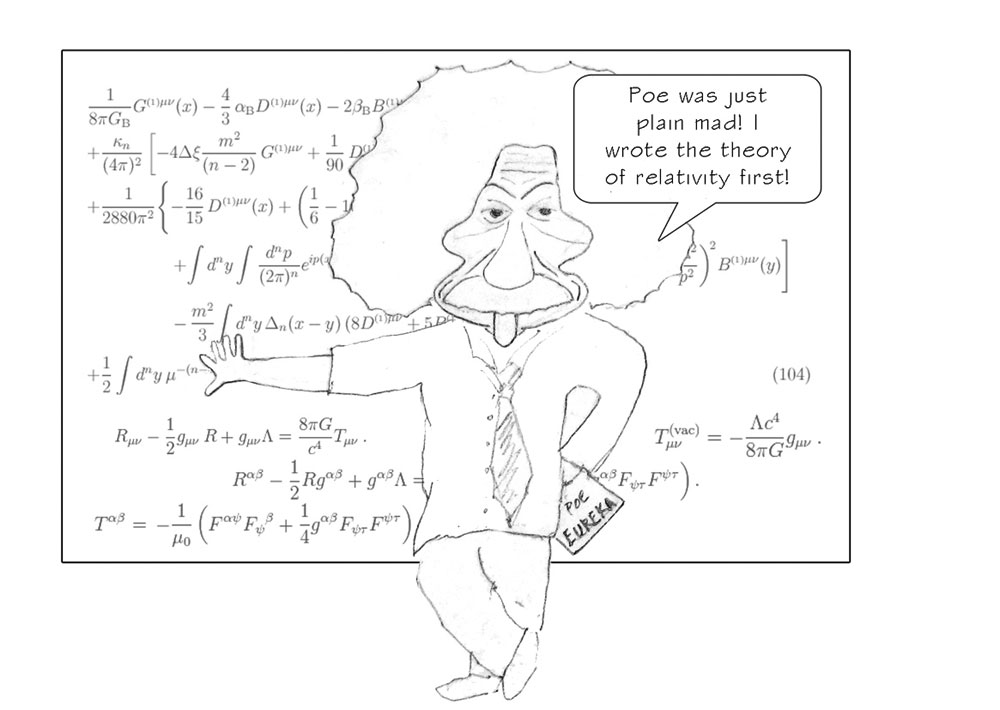An intriguing lecture last week revealed inextricable links between Edgar Allan Poe, Albert Einstein and the Koran. A lecture hosted last week by the Delft Islamic student society, Ibn Firnis, offered surprising revelations about Edgar Allan Poe, the Holy Koran and Albert Einstein.
René van Slooten, a leading ‘Poe researcher’, convincingly made the case that Poe’s final treatise, ‘Eureka’, a response to the philosophical and religious questions of his time, was a forerunner to Einstein’s theory of relativity.
Poe, a poet and writer born in Boston (US) in 1809, was largely unappreciated during his lifetime. His melancholic writing style and macabre stories take readers back to dark, unsettling years of yore.
Early in the lecture, Omran Sadigy, a student from Afghanistan, asked if Poe was a Muslim? “It wasn’t uncommon for 19th century artists to find oriental inspiration for their work.” Van Slooten replied. “They often read mythology and religious texts, anything that wasn’t ‘Western’ in ideology, often to break away from the conventional and boring, brought on by the scientific laws of the 19th century, in order to search for the spiritual. There’s reason to believe that Poe was quite well-versed in the Koran.”
One of the earliest examples of Poe’s inspiration from the Koran is his short story, ‘The Pit and the Pendulum’. The pendulum refers to a clockwork universe substantiated by laws “established by scientists like Newton, Laplace and Kepler, a world where God is written off the equations, from which man is trying to escape. The pit, referenced by Poe to a verse in the Koran, might have been a black hole!” Van Slooten muses.
Poetry to science? That’s quite a transformation. “Not really,” Van Slooten argued. “Poe even joined the army, working in the ballistics section, and his jump to science, and in particular cosmology, is no wonder! Although Einstein had developed the mathematics to explain his general theory of relativity, he couldn’t believe it himself, which made him introduce the infamous ‘cosmological constant’. ‘Eureka’, on the other hand, had no mathematical backing. Poe proposes several things that were understood much later, like gravity not being a fundamental force in nature, and proposes another fundamental force that acts between particles, a force that’s direct and instantaneous. He even goes on to suggest the chaos theory and predicts gravity waves.”
To an awestruck audience, Van Slooten showed the exact Koran verses, and certain paragraphs in ‘Eureka’, which share uncanny resemblances. The job is made easier by Poe, who cited the Koran in his footnotes. “The universe in Eureka was cyclic and pulsating; created from a unified primordial particle; consists of explosion, expansion, and condensation; the space contracted and collapsed, annihilated and immediately was re-created; space was unlimited, and he suggests the existence of multiple universes,” Van Slooten explained.
Stunned by this revelation, the small crowd is teaming with questions, with Einstein’s knowledge of this text topping the list of queries. “Einstein probably wasn’t inspired from the text, but we do know that when several professors and scientific historians sent him a copy of the book to read, he claimed to find the book dull, and Poe pathological! There’s no doubt he saw Poe as a threat, since ‘Eureka’ proposed lots of Einstein’s ideas 60 years before Einstein wrote them!” reaffirms Van Slooten.
“’Eureka’ made the modern concept of universe widely known in Europe, in the 19th and 20th centuries, and Alexander Friedmann, Georges Lemaître and Edwin Hubble were definitely inspired by it,” Van Slooten states firmly. “They saw new opportunities in the general theory of relativity, and published independent articles, leading up to the ‘Big Bang’ theory.” Van Slooten then revealed the curious fact that Friedmann, Lemaître, Hubble and Poe all had experience working in the field of ballistics. “Coincidence?” he asked.
www.poe-eureka.com
www.eapoe.org
www.poedecoder.com
www.invitation-magazine.com
Bijna negentig deelnemers staan er op de inschrijvingslijst genoteerd. Een week lang bestrijden zij elkaar in diverse onderdelen, verdeeld over de speelniveaus 2 tot en met 9. De enige speler uit de (hoge) categorie 2 is Femke Verhaart. Bij gebrek aan voldoende vrouwen speelt ze in een poule tegen ‘drietjes’ en ‘viertjes’. “Die slaat ze genadeloos van de baan”, weet secretaris Linda Giesselink. De enige speelster die nog enigszins tegenwicht zou kunnen bieden, Marieke de Wit, verschijnt de hele week niet op de baan. Ze is geblesseerd.
Verhaart vindt het naar eigen zeggen nog steeds leuk om te winnen, ook al steekt ze wat niveau betreft ver boven de rest uit. Competitie spelen doet ze elders. “Maar op dit soort toernooien doe ik altijd graag mee”, verzekert ze. “Altijd hartstikke gezellig.”
Verhaart komt deze donderdagavond net van de baan van een potje mixed ‘fundubbel’, een onderdeel waarin laag geklasseerde spelers gekoppeld worden aan spelers met een hoge rating. Samen met Sybrand Attema (niveau 7) heeft ze zojuist gewonnen van het duo Van der Hall/ Nieuwenhuis, met 7-6, 6-0. Verhaart is lid van Obvius sinds de oprichting in 2005. Hoe lang dat nog duurt, is de vraag nu ze inmiddels is afgestudeerd. Ze geniet van de genoemde gezelligheid. “Vooral die fun-potjes zijn ontzettend leuk. Veel wind? Ach, daar heeft iedereen toch last van?”
De TU-vlaggen staan op deze vierde toernooidag strak te wapperen. Publiek laat zich op deze toch wel erg frisse avond niet zien. Het is in elk geval droog op de verschillende banen waarop de partijen zich in alle gemoedelijkheid afspelen. Incidenteel doorbreekt een nauwelijks woeste kreet uit de mond van een wat fanatieker type kort de betrekkelijke rust: “Wat zíjn dat nou voor ballen!?”, foetert een in rood shirt gehulde speler, die niet geheel tevreden is met zijn service, tegen zichzelf.
Binnen, in het Sportcafé, fungeert de wedstrijdtafel als ontmoetingspunt. Daar melden uitgespeelde tennissers de uitslag en kunnen leden gokken op setstanden van wedstrijden. De muur is behangen met een grote lap papier waarop een Levensweg is uitgetekend, analoog naar het bekende bordspel. Wie uitslagen juist voorspelt of zelf een partij wint schuift een aantal vakjes op. Aan deze creatieve uitspatting is door de commissie een paar middagen enthousiast gewerkt, vertelt toernooicommissaris Jan van Arnhem. “Elk jaar wordt een spel bedacht, om een beetje interactiviteit tussen de leden op gang te brengen”, legt hij uit. “Zo leren de leden elkaar wat beter kennen. Meestal ontmoeten ze op de trainingen alleen mensen van hun eigen niveau.”
Bestuurslid Widodo Rahardjo vertelt dat de vereniging werkt aan een meerjarenplan. “Elk jaar is er een ander bestuur met een eigen beleid. Met het meerjarenplan willen we de continuïteit van de club waarborgen. Bij ons eerste lustrum vorig jaar hebben wij ons de vraag gesteld: wat hebben we bereikt en waar willen we over tien jaar staan? We hebben nu 315 leden. We willen graag groter worden, maar hebben daar geen capaciteit voor.” Met andere Delftse (burger)tennisverenigingen wordt gesproken over eventuele samenwerking. “In de breedte zijn we sterk, maar aan de top is het dun. We willen de beginners op een hoger niveau brengen, zodat we de spelerspiramide rechter krijgen.”
Na de waterkoude donderdagavond spelen de drie laatste speeldagen zich in veel prettiger weersomstandigheden af. Op de finaledag is de ongeplaatste Paul Willekens een verrassende winnaar in de klasse HE3/4. Op een veel lager niveau (HE8) zorgen Nicola Pambakian en Sybrand Attema in een zinderende driesetter, inclusief tiebreak, voor een spannend slotakkoord. Eerstgenoemde wint met 6-4, 6-7, 7-5.



Comments are closed.